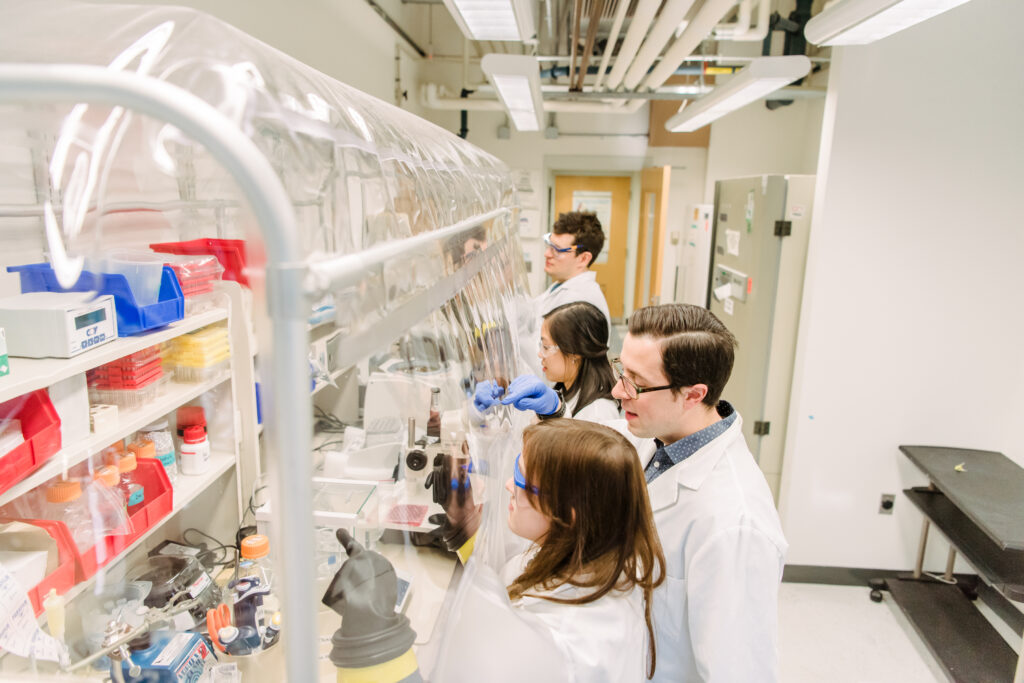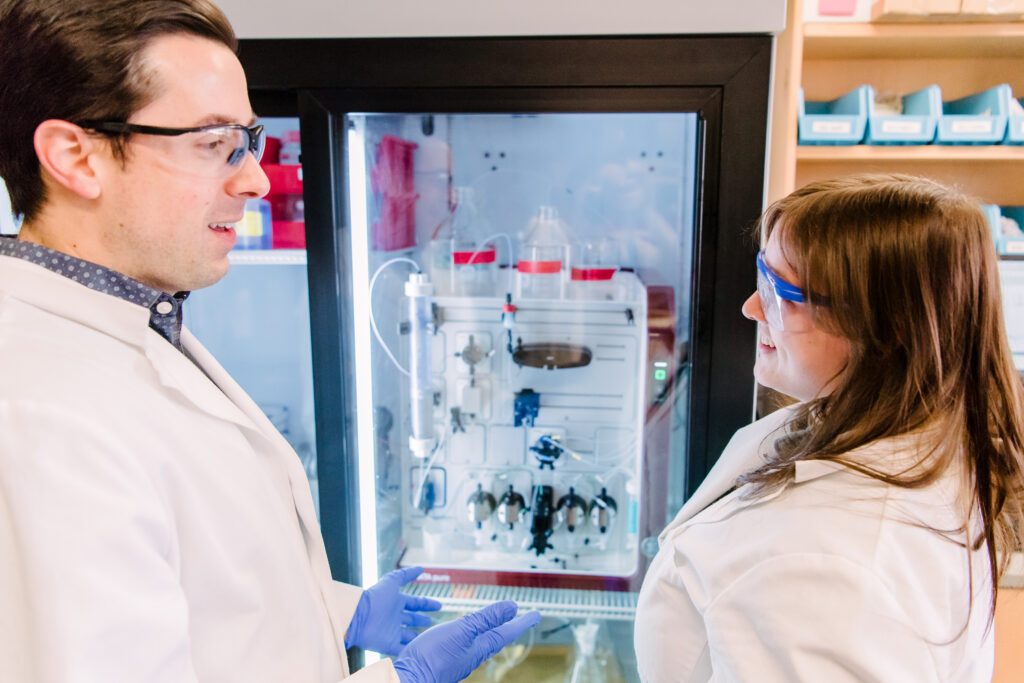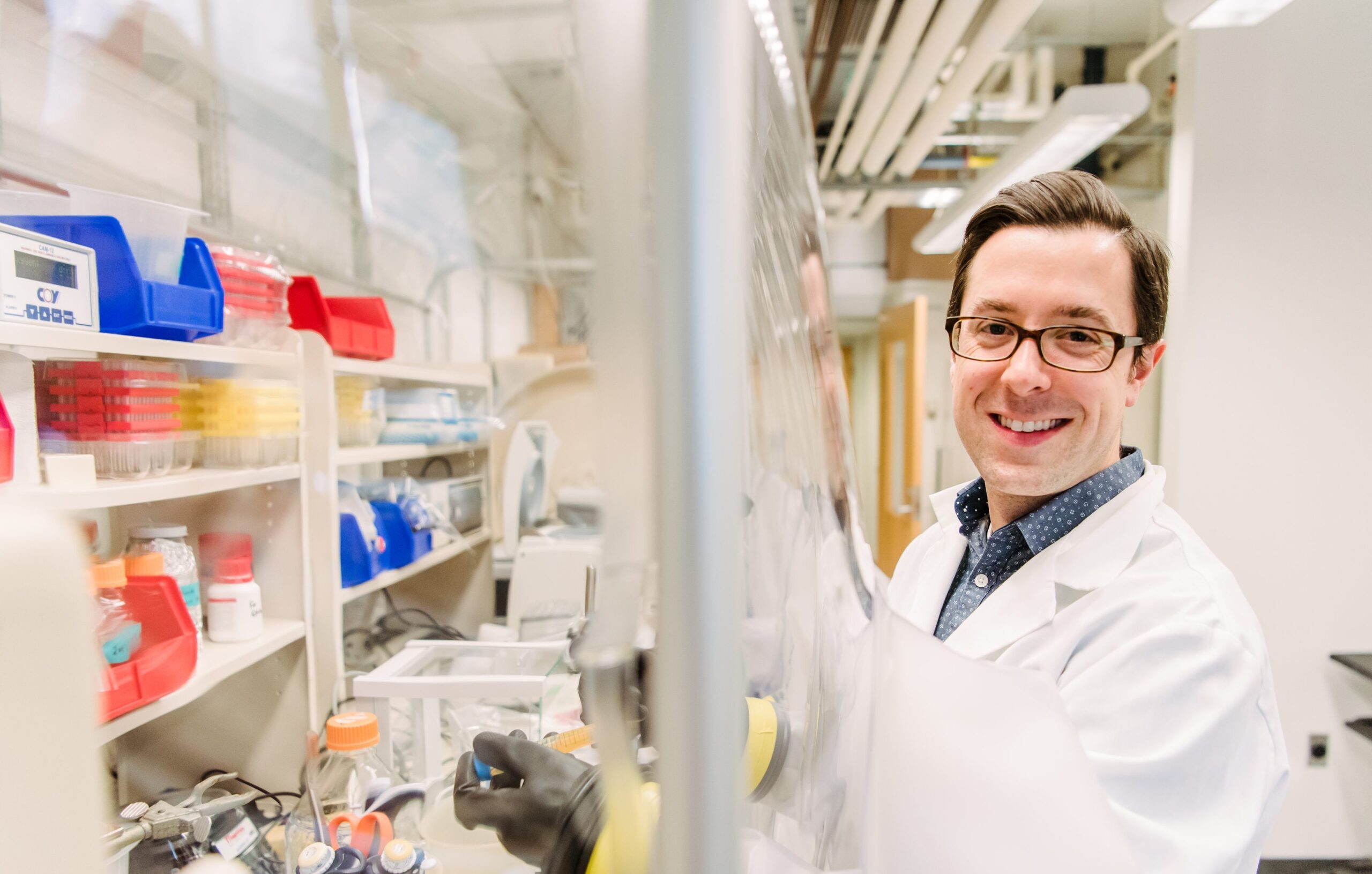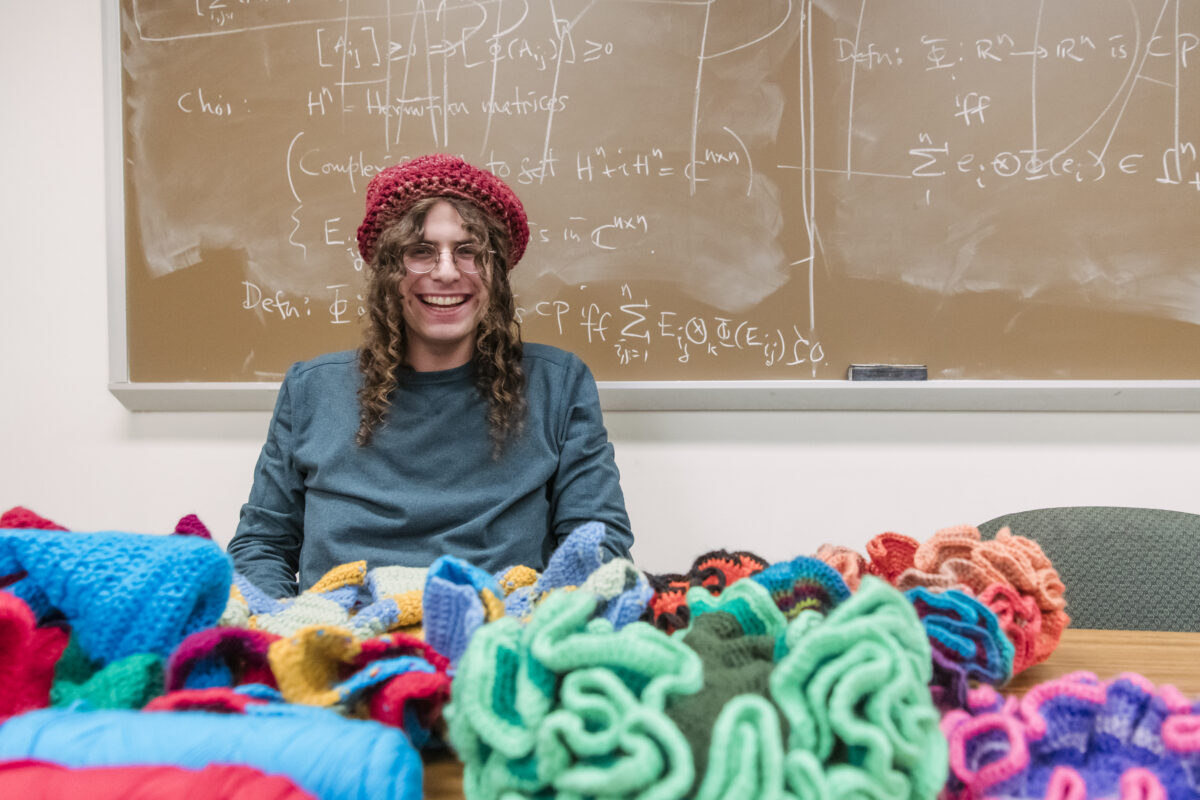With antibiotic resistance on the rise, it’s critical that researchers develop new ways to stop bacteria that cause diseases like food poisoning, sepsis, pneumonia, or tuberculosis. “We have to think about more strategic and clever ways of attacking bugs,” says Aaron Smith, assistant professor of chemistry and biochemistry at UMBC. “One way is to work on identifying and characterizing additional targets that we can consider for antibiotic development.”
Potential new targets include the systems that allow bacteria to grow and to reproduce. This includes systems bacteria use regularly to take up essential nutrients from their surroundings, such as the soil or an animal host.
Smith’s lab focuses on how biological systems take up and process iron, and he’s just received a two-year grant from the National Institute of Dental and Craniofacial Research, a division of the National Institutes of Health, to explore how the bacterium Porphyromonas gingivalis takes up reduced iron, a specific form of the element. P. gingivalis is responsible for gingivitis, a gum disease and one of the most common infections worldwide.
Virtually no living thing can survive without iron: It’s critical for DNA synthesis and other metabolic processes that “help drive the chemistry and survival on our planet,” Smith says. Plus, the way bacteria take up reduced iron is very similar across all species—unravel the way one species does it, and you’re much closer to understanding them all.

Bound for discovery
Virtually all bacteria use something called the Feo system to take up iron. In many bacteria, it consists of three proteins: FeoA, FeoB, and FeoC. FeoA and FeoC play supporting roles, while FeoB is the “gatekeeper that sits in the cell membrane and transports reduced iron to the inside of the cell,” explains Smith. However, there is evidence that without FeoA, FeoB can’t do its job nearly as well.
“Despite the fact that it’s a small protein, FeoA appears to have a really big role in iron uptake,” Smith says. “We’re interested in understanding how FeoA and FeoB are interplaying with one another, and how that might drive or regulate the reduced iron uptake process. If we can understand how that process works, then we can think about ways to disrupt that process.” That could lead the way to new antibiotics.
In the last six months, the lab made a breakthrough by solving the atomic structure of the FeoA protein in a different bacterium. The structure reveals a strong candidate for the exact site on the FeoA protein where it binds to FeoB. Previous research has indicated where the binding site is on FeoB. One of the goals of the new grant is to confirm these binding sites in P. gingivalis.

Creative techniques
Smith and his team will use crystallography, a technique that freezes compounds in time, allowing researchers to determine and examine their unique molecular structure. Through this technique, they’ll examine FeoA and FeoB at different stages of their reaction with one another. “We think that will reveal the atomic level interactions,” Smith explains. “Ideally, we’d like to see the entire process at atomic-level resolution.”
Smith is hoping the crystallography work will identify which amino acids (the building blocks of proteins) in FeoA are critical for its proper interaction with FeoB. To further test those ideas, they’ll genetically modify the bacterium at the indicated amino acids and see if it can still survive on reduced iron. “Those results could give us a really strong insight as to whether iron uptake might be a viable target for disruption,” Smith says.
The lab also plans to collaborate with Robert Ernst, professor of microbial pathogenesis at the Maryland School of Dentistry in Baltimore. The grant will support training for graduate students in the Chemistry-Biology Interface program, a joint venture between UMBC and the University of Maryland, Baltimore funded by the NIH.
Smith’s students will spend time in Ernst’s lab to learn techniques for the genetic modification experiments. “It really expands the scope of what we can test,” Smith says. “Instead of it just being of intellectual interest to biochemists, it adds in a level of biology that’s really essential.”
The results of the work will be broadly applicable to a wide range of bacteria, but studying P. gingivalis specifically has opened Smith’s eyes to the importance of oral health.“When you look at how your oral health is linked to lifelong health,” and conditions from stomach ulcers to cardiovascular disease, “it’s quite incredible,” Smith says. “Oral health really trickles down into every aspect of your life.”
Banner image: Aaron Smith in his lab. All photos by Marlayna Demond ’11 for UMBC.
Tags: ChemBiochem, CNMS, Research




